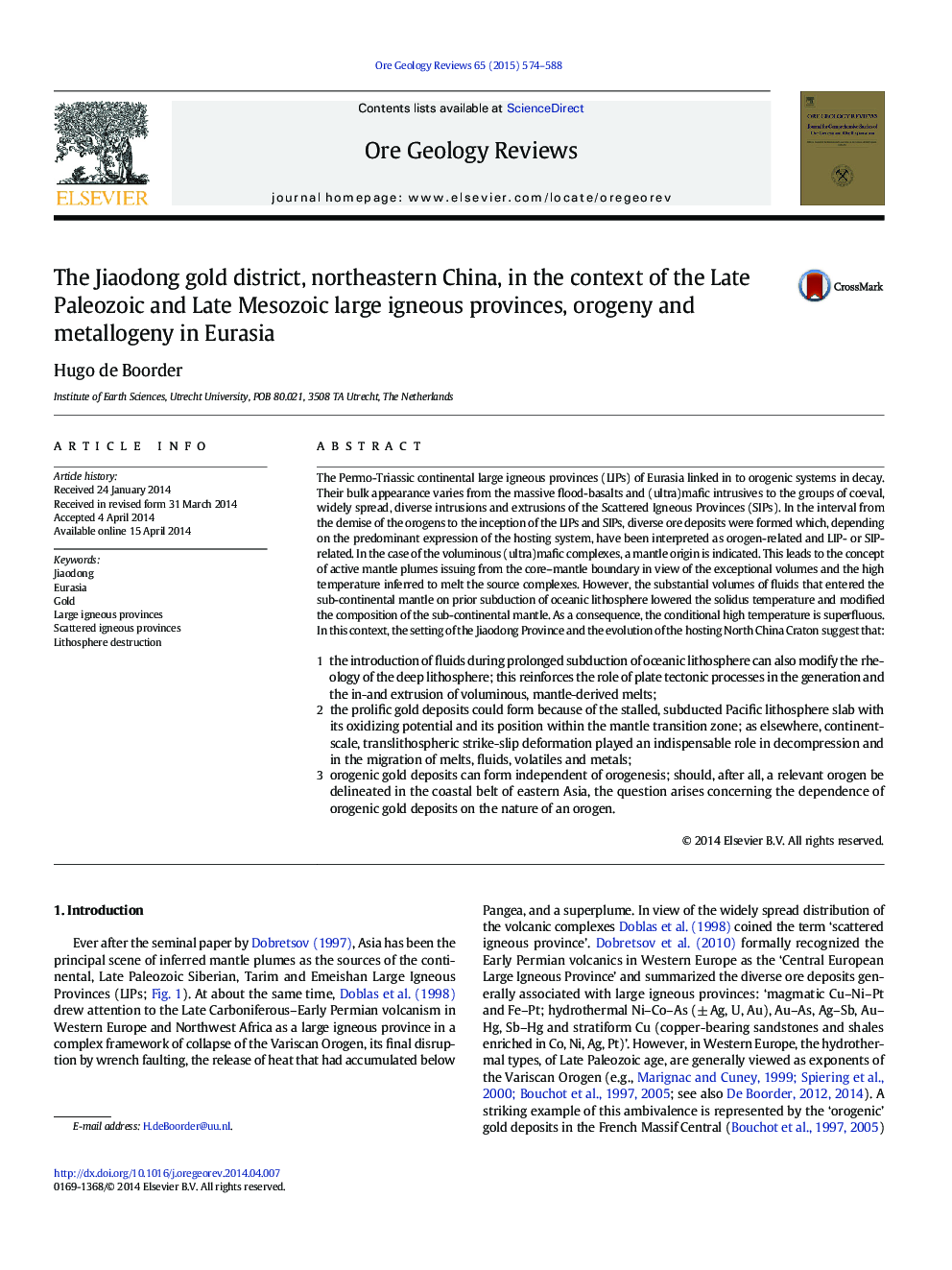| کد مقاله | کد نشریه | سال انتشار | مقاله انگلیسی | نسخه تمام متن |
|---|---|---|---|---|
| 4697278 | 1351869 | 2015 | 15 صفحه PDF | دانلود رایگان |
• The start of a large or scattered igneous province may follow the demise of an orogen.
• During the intermission, concentrations of gold and other metals form.
• The Jiaodong gold province shows, however, that an orogen is not a requirement.
• The Jiaodong province demonstrates that an active mantle plume is not required either.
• The relation resides in the destruction of a segment of the lithosphere.
The Permo-Triassic continental large igneous provinces (LIPs) of Eurasia linked in to orogenic systems in decay. Their bulk appearance varies from the massive flood-basalts and (ultra)mafic intrusives to the groups of coeval, widely spread, diverse intrusions and extrusions of the Scattered Igneous Provinces (SIPs). In the interval from the demise of the orogens to the inception of the LIPs and SIPs, diverse ore deposits were formed which, depending on the predominant expression of the hosting system, have been interpreted as orogen-related and LIP- or SIP-related. In the case of the voluminous (ultra)mafic complexes, a mantle origin is indicated. This leads to the concept of active mantle plumes issuing from the core–mantle boundary in view of the exceptional volumes and the high temperature inferred to melt the source complexes. However, the substantial volumes of fluids that entered the sub-continental mantle on prior subduction of oceanic lithosphere lowered the solidus temperature and modified the composition of the sub-continental mantle. As a consequence, the conditional high temperature is superfluous. In this context, the setting of the Jiaodong Province and the evolution of the hosting North China Craton suggest that:1the introduction of fluids during prolonged subduction of oceanic lithosphere can also modify the rheology of the deep lithosphere; this reinforces the role of plate tectonic processes in the generation and the in-and extrusion of voluminous, mantle-derived melts;2the prolific gold deposits could form because of the stalled, subducted Pacific lithosphere slab with its oxidizing potential and its position within the mantle transition zone; as elsewhere, continent-scale, translithospheric strike-slip deformation played an indispensable role in decompression and in the migration of melts, fluids, volatiles and metals;3orogenic gold deposits can form independent of orogenesis; should, after all, a relevant orogen be delineated in the coastal belt of eastern Asia, the question arises concerning the dependence of orogenic gold deposits on the nature of an orogen.
Figure optionsDownload as PowerPoint slide
Journal: Ore Geology Reviews - Volume 65, Part 3, March 2015, Pages 574–588
